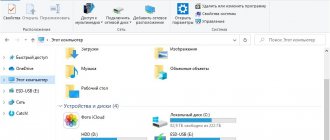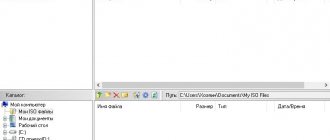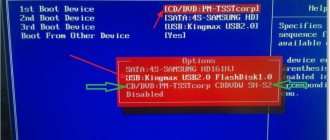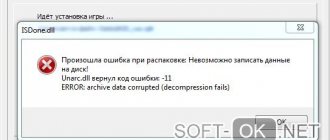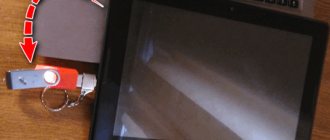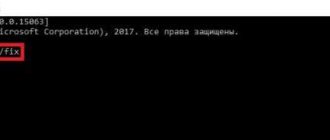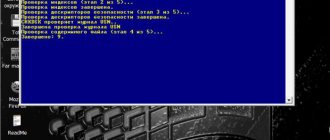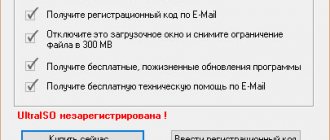Disk Utility is an application that comes with your Mac. It's hidden in the Utilities folder, which is inside the Applications folder, but it's easy to find using Spotlight, which you launch by pressing Command+Spacebar. Here's what you can use Disk Utility for:
- Disk Utility is used to erase, format, or manage internal drives and external storage devices.
- Disk Utility can also be used to add and manage volumes and organize dates on partitions.
- Disk Utility can be useful if you are working with RAID sets. Combining multiple drives into a RAID set that acts like a single drive can improve performance, reliability, and storage space.
- You can use Disk Utility to create a disk image of the files you want to move to another computer, archive, or backup.
- Disk Utility is used to diagnose and fix problems with disk or damaged volumes.
Disk Utility was redesigned in Mac OS X El Capitan when it was redesigned and many features were improved or removed.
MacOS High Sierra has also seen some changes thanks to a new file format introduced by Apple: APFS (more on that below).
Why use Disk Utility
You may want to use Disk Utility if you experience the following:
Your computer won't start. (Read: How to fix a Mac that won't turn on).
The external device will not work. (Read: How to access an external drive that doesn't show up on Mac).
- Your applications close unexpectedly.
- You have a damaged file.
- You need to mount, unmount or eject the drive.
- You need to change the file system - for example, enable or disable journaling.
- You think there is a problem with your startup disk.
- You need to repair the damaged disk.
- Erase, format or partition the disk.
- Disk Utility was used to check and correct permissions, but starting with El Capitan this is no longer necessary.
Additional recovery mode options
While you may find that these three main options provide everything you need, there are others, and they're surprisingly easy to miss. Since this macOS Utilities panel opens as the only thing on your screen, and especially because it's located right in the center, you tend to concentrate on it and may not even notice that the menu bar is there.
Seriously, you might miss that they're here, but Mac Recovery Mode has powerful additional tools
see also
Mac
Apple-patented Magic Keyboard with built-in Mac inside
This macOS Utilities panel is a Mac app, so it has a Mac app menu with the familiar Restart or Shut Down menu in the Apple menu. If your Mac is the latest, these menus will also contain additional options needed to resolve specific issues.
Launch Security Utility Network Utility Terminal
Terminal used to be the most popular because it allows advanced Mac users to run scripts that check the hard drive. Network Utility reports details on your Internet or other network connection.
Now probably the most commonly used is the Startup Security Utility. This is due to the T2 security processor in more and more new Macs, and this processor has one impact that power users won't like. By default, a Mac with a T2 chip and macOS Catalina cannot boot from an external drive.
You have to explicitly tell it that you want to do this, and you do it in this utility. Here's everything you need to know, do, and worry about using it to boot Catalina from an external drive.
How to Find Out If Your Drive Is Failed Using Disk Utility
If you think there's a problem with the disk inside your Mac or external storage device, you can use the First Aid feature in Disk Utility to check.
The First Aid feature in Disk Utility runs various checks and, if it detects a problem with your drive, will fix it.
Note: Disk Utility has been slightly modified in OS X El Capitan, and as a result, the way you recover a drive has changed slightly. The steps you need to take will depend on the version of MacOS you are using. We assume that you are running a version newer than El Capitan, starting with this version of Mac OS X released in September 2015.
How to repair a disk using Disk Utility
How you restore the drive will determine whether it is your Mac's startup drive (the one your Mac runs from, where the operating system is installed), or a separate drive that is connected to your Mac. If this is your boot drive, skip to the next section.
- Open Disk Utility (from Applications > Utilities or Disk Utility cmd + space).
- Select the volume on which you want to run First Aid. This could be an external hard drive (if it's your own Mac hard drive, you'll need to skip to the next section).
- Click on First Aid.
- Click Run. This will start the inspection and repair process.
- When Disk Utility starts checking, you will see a drop-down sheet with status information. You can click on the triangle below to see more information.
- If no errors are found, you will see a green check mark at the top of the drop-down list.
- If there were errors, Disk Utility will try to fix them. (In older versions you had to manually select Repair Disk).
If Disk Utility can't repair a disk or thinks the disk is about to fail, it will warn you. If so, you should back up your data before it's too late. Read this article about backing up your Mac.
You may also find this useful: How to recover and delete data from a failed hard drive, SSD or external drive.
DriveDx
This utility provides comprehensive information about the SSD drive.
In the tab with the name of the drive you can find basic information, problems that have arisen, drive health indicators and other useful information. Here we see that the disk is absolutely healthy - the “overall health” indicator is 100%, however, our SSD has a little less “life” left. The storage capacity is 480 GB, and the total operating time is 982 hours. The number of cycles exceeded 3,000, which is quite normal for a young disk.
The absence of problems and good health indicators indicate that the drive is being monitored and maintained at maximum performance.
The full list of indicators is available in the corresponding tab.
In the statistics tab you can find such interesting facts as the number of written and read logical sectors, the presence of interface errors and data on forced reboots.
When errors occur, they are all recorded in the log, so you will always know what is the cause of a particular problem and can quickly fix it. To check your SSD for such errors, you can run a special test that will identify them. There are two options to choose from – a quick and a long test. They are carried out automatically when the program starts.
Perhaps the only drawback of the application is that it is paid. You will have to pay $24.99 for a personal license, and $49.99 for a family license. Developers periodically organize sales, so if the circumstances are successful, you can grab the program with a 20 percent discount.
How to repair your startup disk/boot disk using Disk Utility
You can run First Aid on your startup disk as described above, but if Disk Utility encounters any errors, it will not attempt to correct them.
If you need to recover your Mac's startup disk (boot volume), you won't be able to because Disk Utility won't be able to recover the mounted volume (the one everything is running from). In older versions of Disk Utility, you will see that the Repair Disk option is not available.
In this case, you need to start your Mac in recovery mode and restore the drive from there. This way, everything can run from the Recovery HD volume that was created when you installed MacOS. (Note that if you have Fusion Drive, things are even more complicated).
- To start in recovery mode, press cmd + R when you start your Mac. We have a detailed guide on using Recovery Mode here.
- Once your Mac boots up, you will see the Utilities screen. Select Disk Utility.
- Select the drive you want to recover from the menu and click First Aid. As stated above, Disk Utility will run its checks and attempt to repair if it can.
- The repair process may take some time.
How to restore disk permissions
When Apple released El Capitan in 2015, it removed the ability to repair disk permissions.
The removal of this feature probably indicates that the permissions fix didn't do much good.
It's still possible to restore permissions using Terminal, but we won't go into that here, following Apple's guidelines and suggesting that it won't do any good and may cause more problems.
However, if you are using Mac OS X Yosemite or earlier and file permissions are no longer set correctly, software that uses that file may not work correctly. If so, here's how to fix the permissions:
- Open Disk Utility, which is located in the Utilities folder in your Applications folder.
- Select your boot disk from the list of volumes.
- Go to the First Aid tab.
- To check permissions, click "Check Disk Permissions". To restore permissions, click "Repair Disk Permissions".
Disk Sensei
Remember the famous Trim Enabler?
The application developers completely rethought the design and capabilities of their product and presented it in a new form, with a new name. Now this is not just a utility for activating Trim, but a full-fledged program for monitoring the condition and “health” of the SSD. The Dashboard tab displays all the necessary information about the solid-state drive: manufacturer, serial number, amount of data written and read, capacity (including filled space), temperature, and even the overall health of the drive. The data is presented in a form that is easy to understand, without unnecessary indicators and other garbage.
Information about the life of the SSD is presented in the Health tab - here is the number of cycles, error data, as well as interesting information such as the disk’s operating time at the moment. A total of 16 indicators are available, each of which a “healthy” SSD should pass without problems. As we can see, in our case it is 16/16 - which means the drive is absolutely healthy. However, this became known from previous utilities.
And now, perhaps, about one of the main advantages of Disk Sensei. Let's switch to the Visual section, which provides visual information about the content located on the SSD. The data is cleverly sorted by sector (hello, Daisy Disk), and you can immediately see which files take up the most space on the drive.
In our case, for example, photographs take up a lot of space. In the application you can track the path to a specific file, which is very convenient. Not every program in this segment can boast of this opportunity.
But the pleasant bonuses don’t end there. In Tools you can clear caches, activate Trim, and also optimize processes that we saw in Chameleon SSD Optimizer: motion sensor, local time machine, writing RAM data to disk.
And if you get really bored, you can run a benchmark or view running processes. Eh, but this Disk Sensei doesn’t make coffee. For all this fun, of course, you have to pay - $19.99 for the licensed version, there is a one-week trial so you can try everything yourself.
How to create a disk image using Disk Utility
Disk Utility can create a disk image of the contents of a folder, which you can then transfer to another Mac, an archive, or any location that doesn't accept folders.
This is similar to compressing a folder into a zip archive, but the advantage is that not only can you use disk image compression to save space, but you can also take advantage of Apple's encryption for the disk image.
Follow these steps to create a disk image using Disk Utility.
